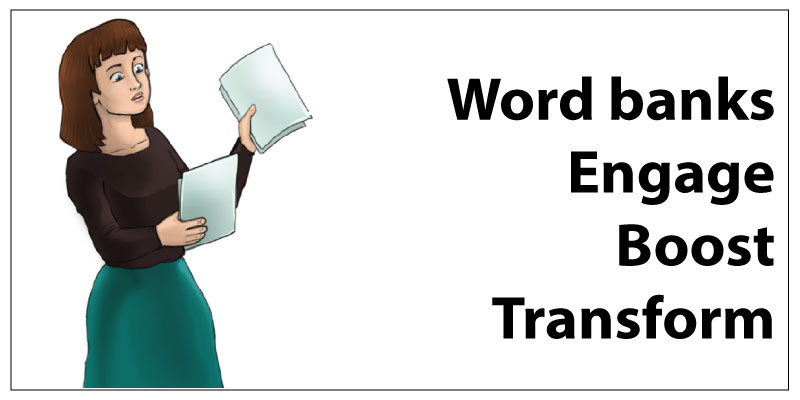Vocabulary is a backbone of language development in early education. For pupils in Grade 2, increasing their vocabulary involves more than just picking up new terms; it also involves knowing how to use them in different situations. A word bank is a useful tool that parents and teachers can use to encourage this progress. However, what is a word bank precisely, why is it needed, and how can it be useful? Let’s investigate these queries and see how a word bank for Grade 2 vocabulary revolutionizes the way children developed their language skills.
What Is a Word Bank?
In essence, a word bank is a list of words that have been arranged so that students can conveniently access them. These terms frequently have something to do with particular themes, issues, or subjects that the pupils are now learning. When studying animals, for example, the word bank may contain terms like “mammal,” “reptile,” “habitat,” and “predator.” Giving pupils a pre-made list of terms to use when writing, reading, or debating the subject at hand is the aim.
When it comes to Grade 2 vocabulary skills, a word bank is typically a list that is either prominently displayed in the classroom or is part of a student’s own notebook. Weekly or biweekly updates are possible, depending on the subjects discussed. Students should be regularly exposed to new vocabulary, have their comprehension of previously taught vocabulary reinforced, and be encouraged to use these words in their own work and conversations.
Why Are Word Banks Necessary?
For a number of reasons, developing a strong vocabulary in Grade 2 is essential. Students are on their journey transitioning from “learning to read” to “reading to learn” at this point. It is expected of them to read materials that are more complicated, communicate more effectively, and hold sophisticated conversations. A carefully selected word bank helps facilitate this shift by providing pupils with a trustworthy source from which to work.
Word banks are essential because they aid in bridging the gap between vocabulary that is passive and that is active. Words that children may not use on their own but can recognize and comprehend when they see them are included in the category of passive vocabulary. Conversely, pupils who have an active vocabulary utilize words with confidence in both their writing and speaking. Word banks provide frequent exposure and practice opportunities, which help in transitioning words from their passive to active vocabulary.
Word banks are important because they aid pupils in comprehending word relationships. Students can observe word relationships, for instance, when acquiring new vocabulary in Grade 2—for instance, the relationship between the terms “predator” and “prey” in the context of animals. Gaining a deeper knowledge of word relationships is essential to improving comprehension and linguistic abilities.
How Do Word Banks Help?
Word banks act as a framework for the development of Grade 2 vocabulary. They give pupils a concrete tool that they can use for speaking and writing at all times. By concentrating on utilizing words correctly instead of straining to remember them, this helps pupils’ cognitive burden. Students are more likely to utilize new words in their writing when they have access to a word bank, which improves their comprehension and recall.
Using the word bank, for instance, a student writing a narrative about their preferred animal can locate words like “habitat” or “nocturnal.” This improves their writing quality and gives them more confidence when utilizing unfamiliar words. As students keep using the word bank, these terms eventually find their way into their vocabulary naturally.
The additional vocabulary knowledge also assists in encouraging student collaboration. Word banks can be used as a collaborative tool in the classroom, where students can contribute words they come across in reading or discussions. By encouraging students to interact with one another’s concepts and terminology, this shared resource enhances the educational process even more.
Practical Tips for Using Word Banks
To make the most of word banks in building Grade 2 vocabulary, here are a few practical tips:
- Make It Interactive: Encourage classmates to contribute to the word bank. They can suggest words they’ve encountered in their reading or heard in discussions.
- Use Visuals: Pair words with pictures or symbols to help students make connections between the word and its meaning.
- Regularly Update: Keep the word bank fresh by regularly adding new words and reviewing old ones.
- Incorporate Games: Use the word bank in fun, interactive games like word bingo or scavenger hunts.
- Connect to Writing: Encourage students to use words from the word bank in their writing assignments. This practical application reinforces their learning.
- Introduce Purple Mash: The engaging activities by this platform, including word banks and themed templates, inspire young writers to create and explore with confidence. Purple Mash is indeed one of the best websites for children aged 4 to 12 and its popularity amongst schools in Dubai has grown manifold. From leaflets to postcards, students can easily craft projects across various subjects and topics.
So, are you ready to unlock the full potential of your students’ Grade 2 vocabulary and make learning an exciting adventure?






Recent Comments